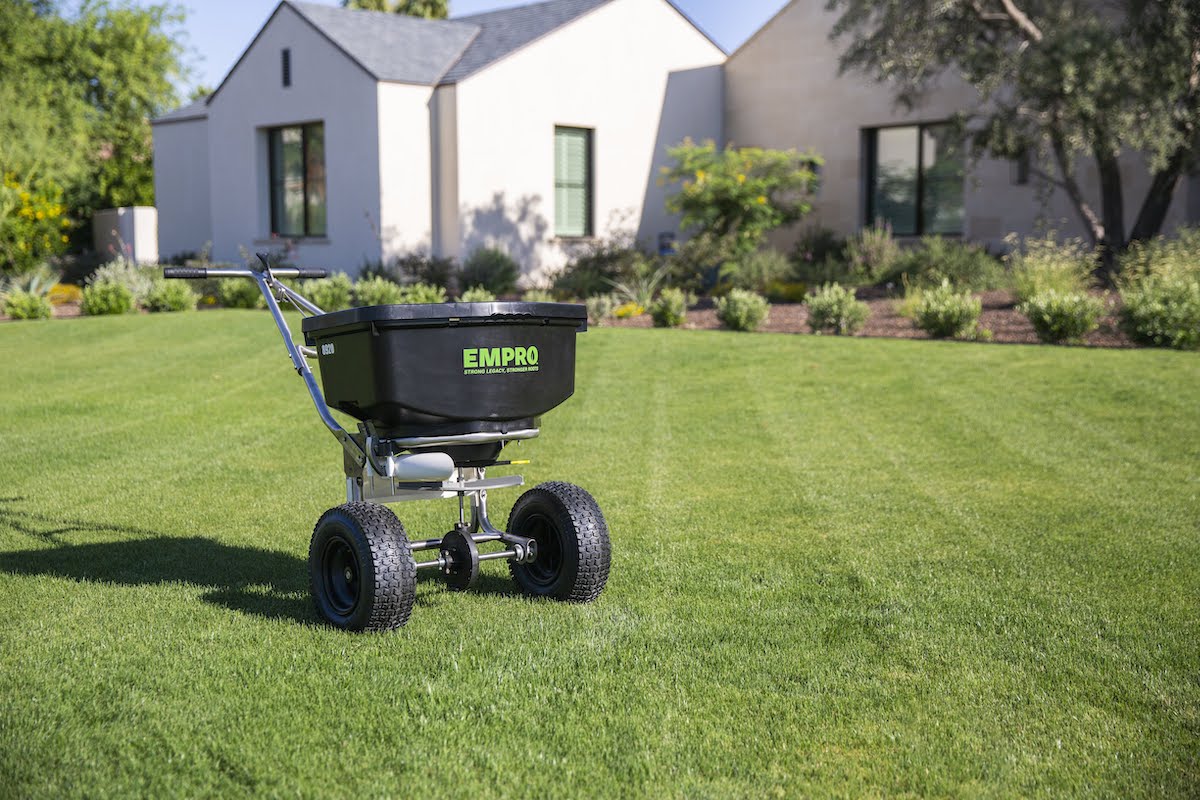It’s August and that means overseeding season is approaching and preparation begins now. Here’s what you need to know to have a successful and prosperous season.
 How to save on seed
How to save on seed
Seed costs vary each year based on the amount of seed carryover from last year, as well as the acres planted and yields from seed farms. Freight costs have also have risen over the last few years.
Save on the seed you purchase at Ewing.
During the overseed time of the year the soil reaches the ideal temperature to overseed your customer’s lawn for healthy turf during the upcoming months.
Reduce seed prices with bulk orders of bags or pallets. If you can estimate the amount of seed you'll need early enough, then placing one bulk order can help you save on the price per bag.
Talk to your local Ewing for more details on seed order options and savings.
Timing and preparing for overseeding
Once you’ve got your seed, you’ll likely need to store it for a few weeks while waiting for outdoor temperatures to cool enough for sowing in September, October or November.
Make sure your storage facility is clean and protected from mice or rats before you bring in seed, and make sure the seed stays dry.
Forecasters are predicting a warmer than average fall across much of the U.S., so you may need to pay attention to the weather to time your seed applications later than usual.
In areas where there is heavy pressure from annual bluegrass (Poa Annua) Applications of Prodiamine can be made to stands of bermudagrass as a preventative treatment. Special care should be taken when determining times and rates. Additionally, applications of Prodiamine following seeding can be performed to prevent further weed invasion. These recommendations vary widely across certain geographies so consult your local extension agent at Ewing professional for more information. Always read and follow label instructions for rates and timing
Hit the ground running
Prior to the overseed operation, make sure that there is nothing impeding the seed from getting to the soil surface. Follow the scalping and dethatching processes that are recommended for your area. After all, without good seed to soil contract, failure is a real possibility.
When the weather is right, you’ll want to get all that seed applied quickly. You can ensure your applications go smoothly by having all the right tools and supplies:
- A spring rake will be helpful to remove thatch and loosen top soil, and increase seed contact with the soil.
- A hand crank spreader for small lawns and a push or broadcast spreader for larger areas will help spread seed evenly.
- Next, apply a seed topper or seed cover mulch to condition the soil, prevent seed movement on sloped areas, protect seed from birds and prevent seed from drying out during germination if dry or windy weather occurs.
- Use a starter fertilizer to give those seeds a strong start. Starter fertilizers will have higher rates of phosphorus which will help with root development and seeding establishment. Traditional starter fertilizers may include 18-24-12, 15-15-15 and many others. In certain parts of the country, ammonium phosphate (16-20-0) is the preferred fertilizer, so check with your Ewing associate or county extension agent. There are also some organic sources available.
Finally, your customers who don’t want any overseeding may be interested in an application of turf colorant to keep their dormant grass a vibrant green color during the winter months. Be sure to let them know it's an option!
For all these products and more for fall overseeding, shop online or visit your local Ewing store for recommendations.





